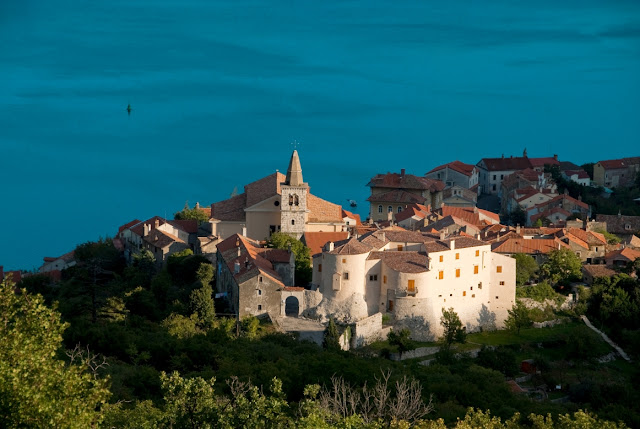 |
| Foto by: Miljenko Segulja |
 |
| Foto by: RI prsten - Klaudio Vrancic |
Bakar is distinguished by its narrow streets and squares that will take you to the church of St. Andrew (the third largest in Croatia), Roman and Turkish houses, Kastel that overlooks the entire Bakar gulf , who was known as the maritime, trade and fishing center of the northern Croatian coast. The view of the Bakar's sea(bay) will sail to your memory a host of people who have sailed, trade and left their mark here - the Illyrians, Celts, Greeks, Romans, Byzantines, Venetians and Croats who settled area in the 7th century.
 |
| Foto by: Miljenko Segulja |
Bakars' biscotti are delicious biscuits (pretzels) that you can buy only in Bakar, fresh or twice baked. It is overdone so it could last more than six months as it is dry and in the past it was very convenient as food on long voyages and was carried instead of bread on long fishing trips, traditionally dipped in red wine, tea or latte. Today biscotti are one of the symbols and souvenirs of Bakar.
 |
| Foto by: RI prsten - Klaudio Vrancic |
 |
| Foto by: Miljenko Segulja |
 |
| Foto by: Miljenko Segulja |
Women in vineyards performed all the necessary work as spraying, sulfuring, weeding and maintaining the vineyards and cellars, to making and selling wine. Each hostess know in detail the production of the famous sparkling wine called - Bakarska vodica, and that perserved the winemaking tradition.
 |
| Foto by: Miljenko Segulja |
After more than half a century of squalor, in 2002 it is established an agricultural cooperative based in Dolčina Praputnjak. The cooperative began reconstruction of the part of Bakar terraces and planted them with the grapevine varieties beline. Unfortunately amounts are very small. Today is planted several thousand vines. We can only imagine what it used to be when the slopes of the Bakar Bay grew over 100,000 vines.
 |
| Foto by: Miljenko Segulja |





Very nice... :-)
ReplyDeletethanks
DeleteVery nice artical
ReplyDeleteOnly one written mistake but very important for people fron Bakar is
Citozens are called BAKRANI in prular not Bakarani as you written
Male populations are BAKRANI
Female populations are BAKARKE
Thanks
Brgds
Zeljko